14 December, 2023
Sarson Ka Saag Recipe | Green Leaves Curry
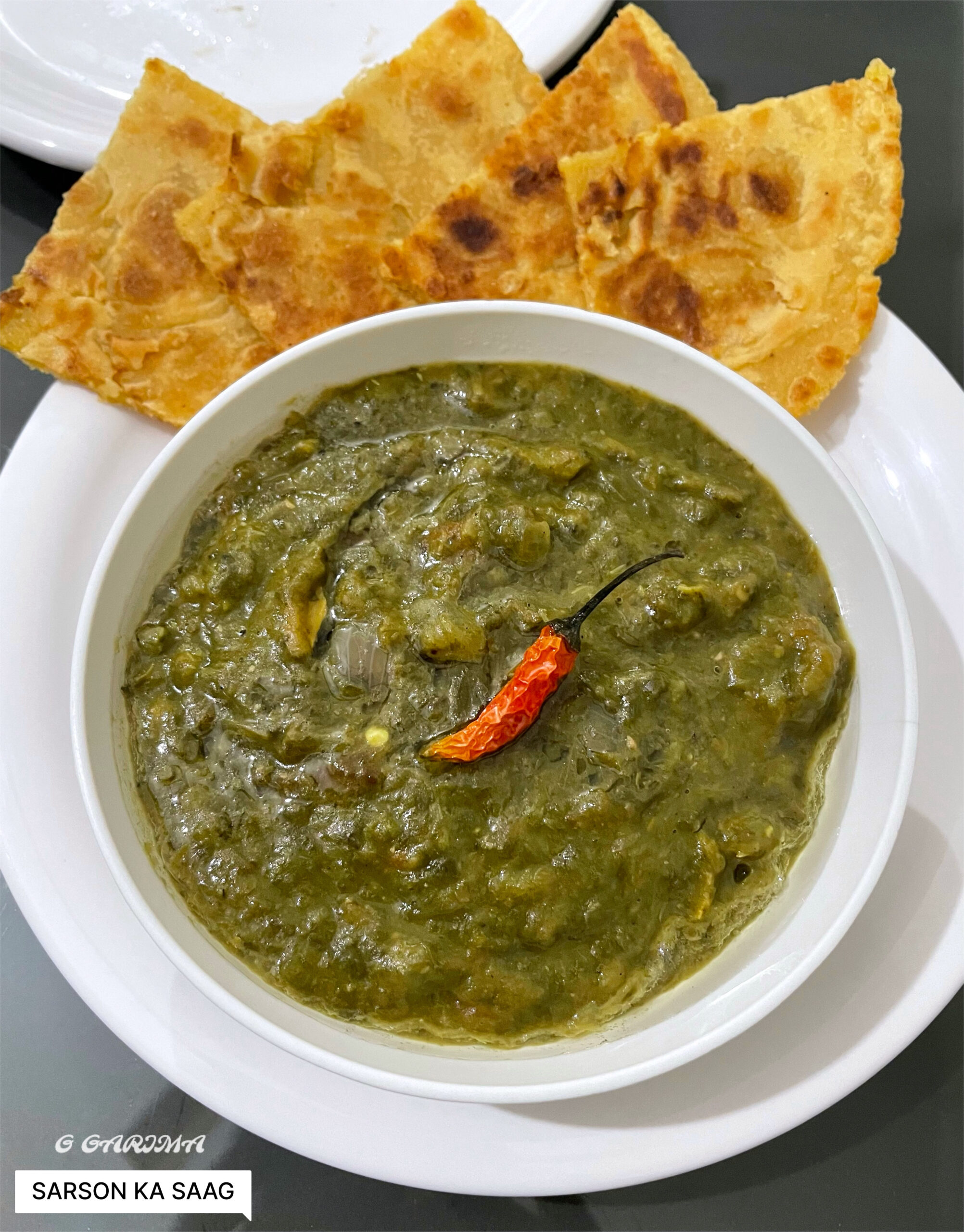
Sarson Ka Saag, a traditional Punjabi dish, holds a special place in the heart of Indian cuisine. This delectable preparation is an amalgamation of Greens like Mustard Leaves (Sarson), Spinach (Palak), and Bathua Leaves (Wild Spinach Leaves), simmered and seasoned with aromatic Spices, creating a flavorful, wholesome dish.
This dish is not only a culinary delight but also holds cultural significance, being an integral part of Punjab that celebrates the richness of Indian cuisine. Its flavors, health benefits, and cultural significance make it a cherished culinary experience.
Serving Suggestions and Accompaniments:
Sarson ka Saag is traditionally served with Makki ki Roti (Corn Flatbread), a dollop of Butter, and Jaggery. This combination provides a burst of flavors and textures that delight the palate.
Regional Influences and Different Styles:
While the Punjabi style is prominent, variations of Sarson ka Saag exist in different regions of India, each incorporating local ingredients and techniques.
INGREDIENTS FOR SARSO KA SAAG RECIPE:
| For Greens Preparation | For Tempering |
|---|---|
| 1 Bunch/ 500 Grams Mustard Leaves (Sarson) with tender stems | 3-4 tsp Ghee (Clarified Butter) |
| 1 Bunch/ 500 Grams Spinach Leaves (Palak) | 4 Large Onions (chopped) |
| 1 Bunch/ 170 Grams Bathua Leaves (Chenopodium) | 3 Large Tomatoes (peeled, deseeded & chopped) |
| 1 cup or 150 Grams Split Green Gram with Skin (Moong Chhilka Dal) | ⅛ tsp Cumin Seeds (optional) |
| 1½ nos Ginger (each of 1 inches) | Salt to taste (or 1 tsp) |
| 4 Green Chillies | |
| Salt to Taste (or 2 tsp) | |
| ¼ tsp Turmeric Powder | |
| Water as Required (or ½ cup) |
PREPARATION:
1. Cleaning and Chopping of Greens:
- Begin by finely chopping the Mustard Leaves (Sarson), Spinach Leaves (Palak) and Bathua Leaves.
- Chop the tender stalks too into very small pieces along with the Mustard Leaves. (Sarson ka Saag is not solely cooked with Mustard Leaves, but also with its terminal buds. Because leaves are bitter in taste and the terminal buds are sweet in taste. That is why it is important to add both to balance the flavors.)
- After chopping all the leaves, combine them in a bowl and wash thoroughly under running water 3-4 times. Lukewarm water is best for cleaning the leaves. It’s essential to wash them multiple times to remove any dirt or impurities.
- Wash the split Green Grams (Moong Chhilka dal) in a bowl and let it soak in an adequate amount of water for about 15-20 minutes. Split Green Grams (Moong Chhilka dal) enhances the nutritional value and texture of the Saag.
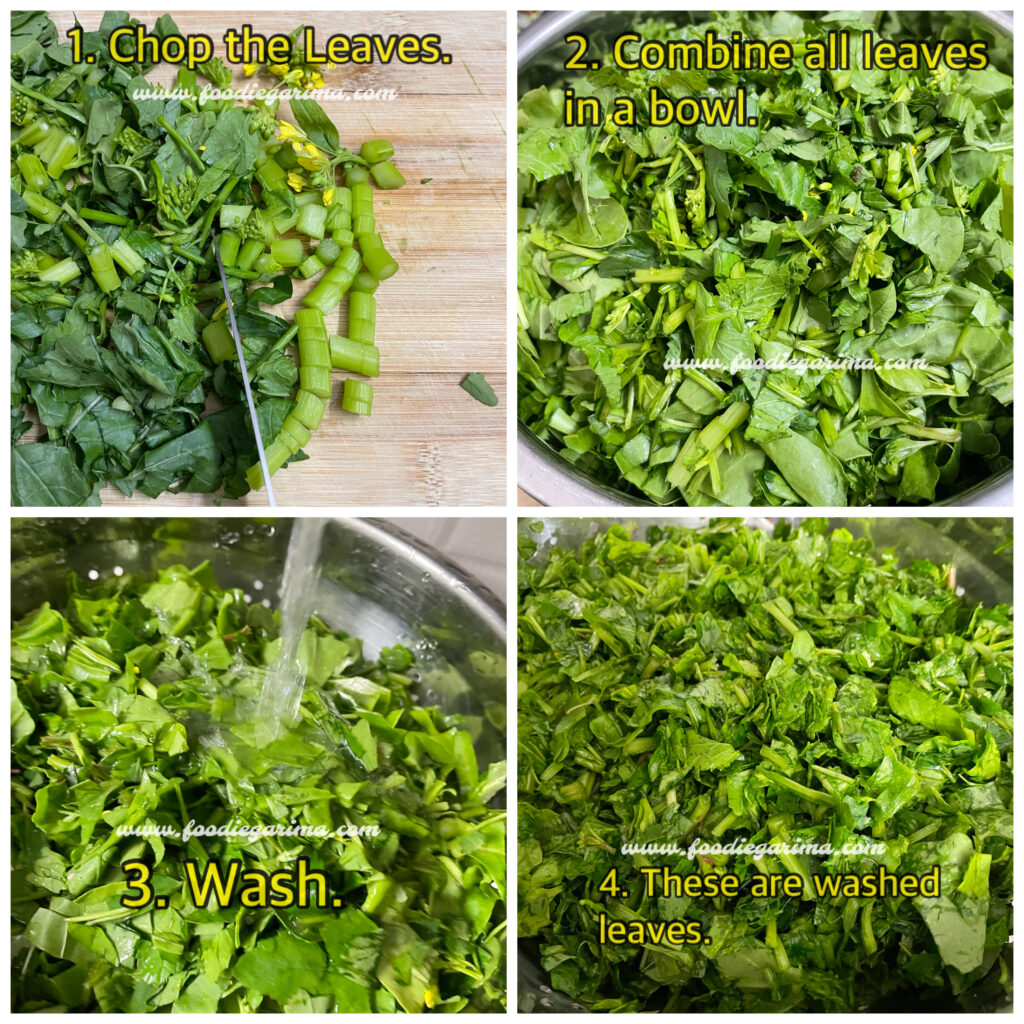

2. Cooking Greens:
- Place the chopped and washed Greens into a pressure cooker along with washed and soaked split Green Grams (Moong Chhilka Dal).
- Add Green Chillies, roughly chopped Ginger, Salt, Turmeric Powder, and a little bit of Water.
- Pressure cook them altogether on high flame until they become tender and can be easily mashed.
- Switch off the flame. Let the pressure cooker depressurize itself.
- Once cooked, churn it using a churner. Mash it well to enhance the texture.
- For a more creamy texture, you can blend it altogether in a mixer grinder into a coarse mixture. Blend it for one second only. Don’t blend it too much. But before blending, let the boiled mixture completely cool down at room temperature.
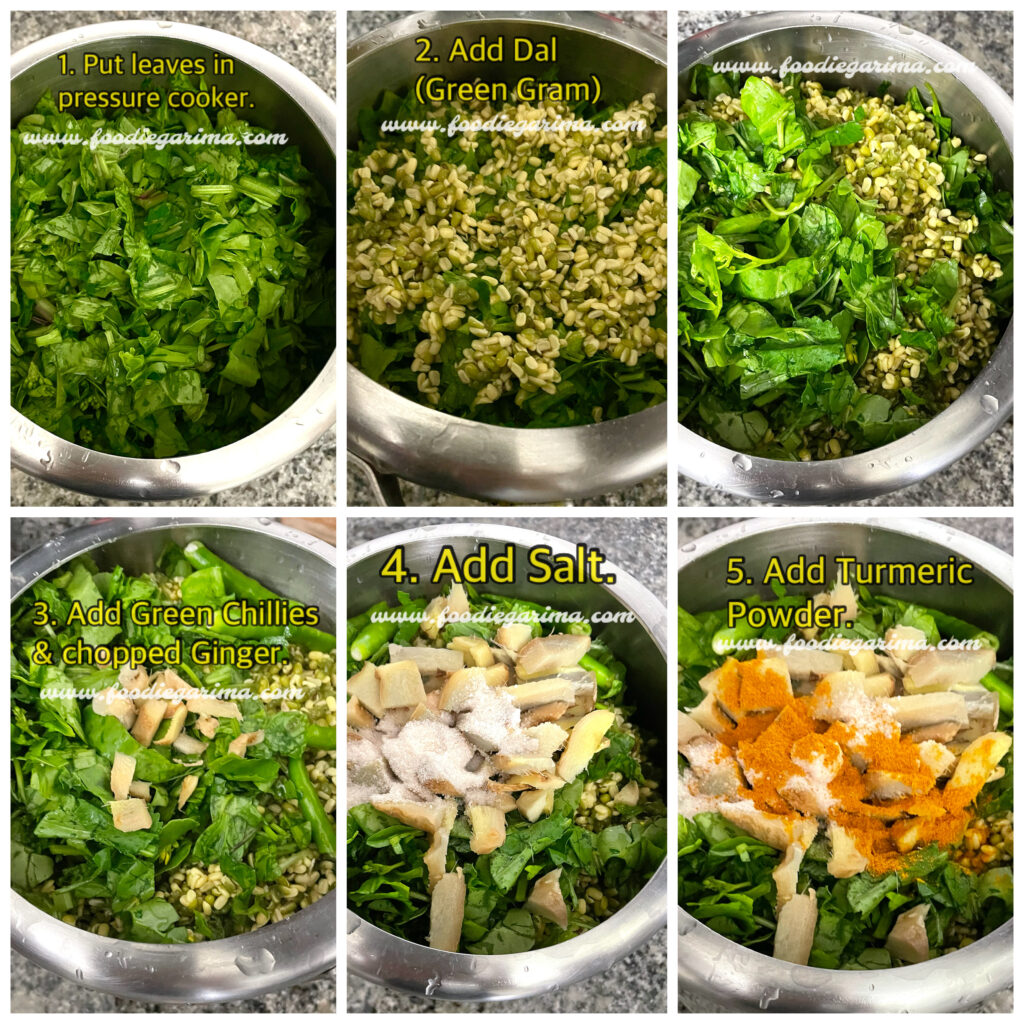

3. Tempering:
- Heat Ghee in a pan.
- Add cumin Seeds and let them splutter. (Adding Cumin Seeds is completely optional. I don’t prefer using it).
- Sauté chopped Onions until they turn golden brown on medium to low flame.
- Once the onion turns golden brown, add chopped Tomatoes and cook them until tender and soft. Adding tomatoes too is completely optional.
- Add Salt to taste.
- Switch off the flame.
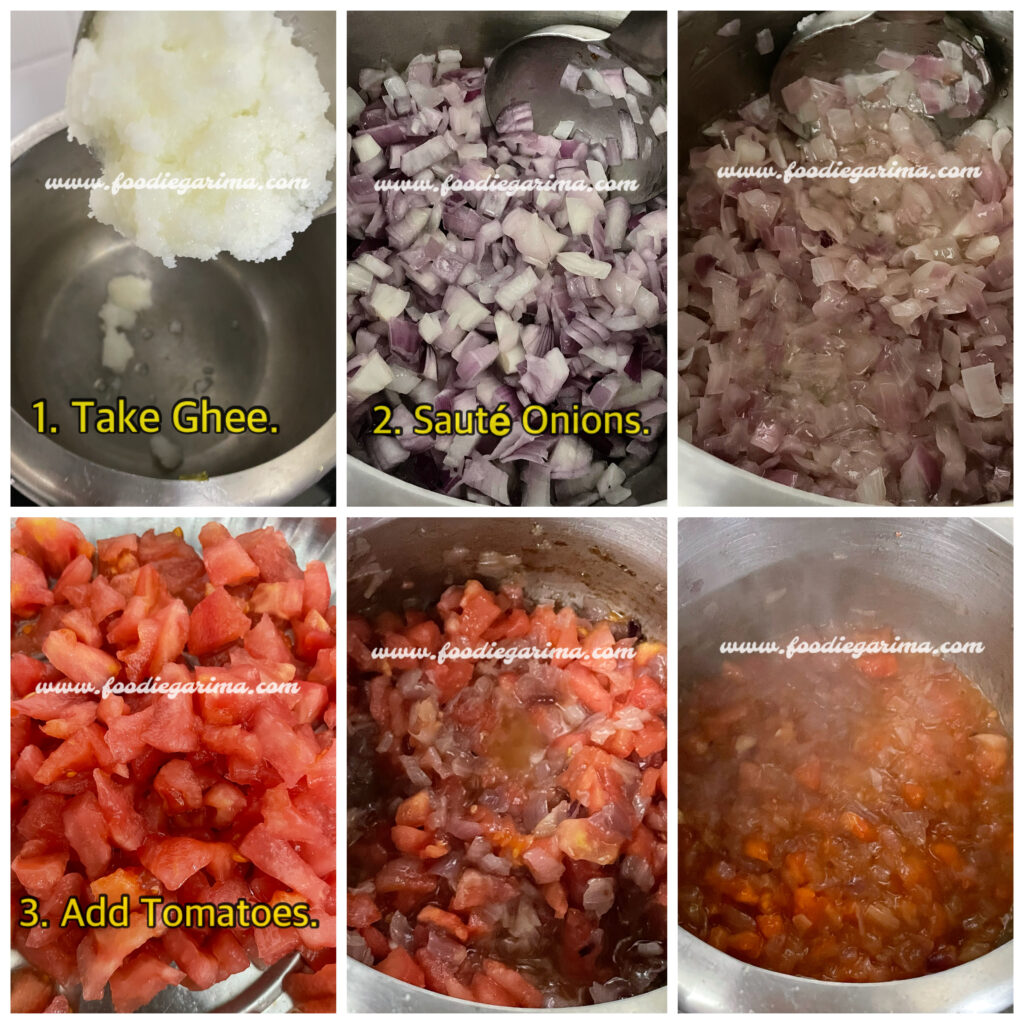
4. Final Dish (Sarson Ka Saag):
- Add the prepared or blended green mixture to the tempering.
- Mix well and our Saag is ready to serve.
- Top it with butter and serve.
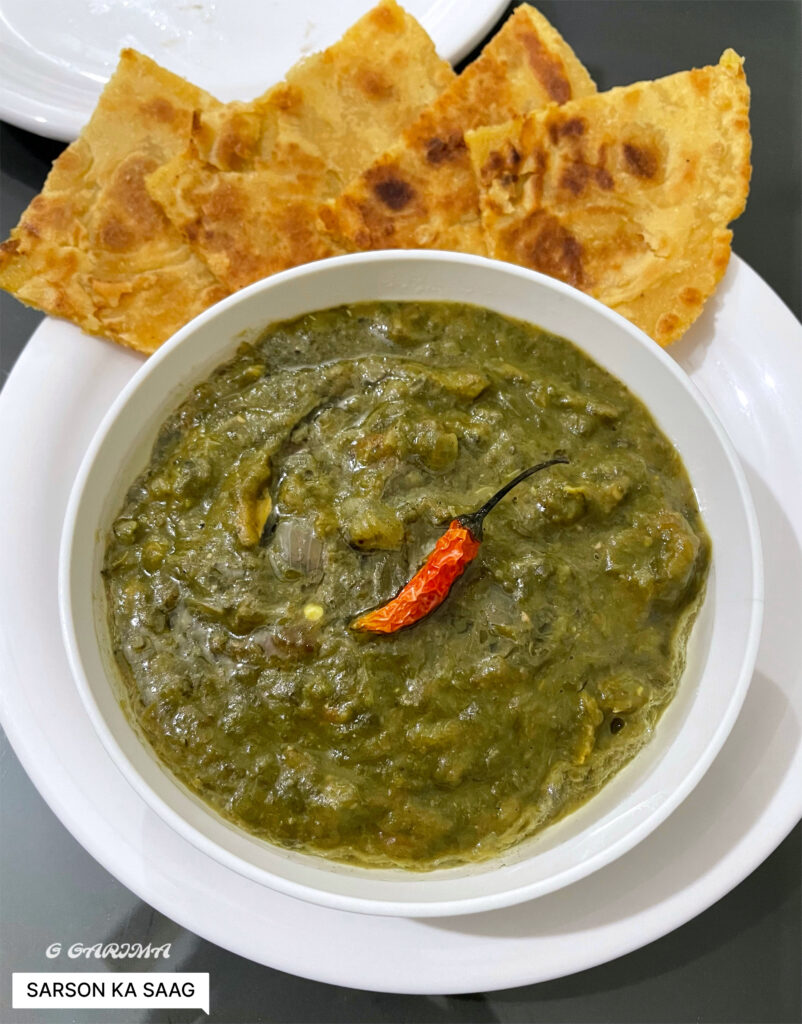
Note:
Adjust the spice levels according to your personal preferences. Some people like keeping it mild and add less quantity of green chillies and other spices.
Health Benefits of Sarson ka Saag:
- Rich in nutrients and antioxidants, sarson ka Saag offers numerous health benefits.
- It aids digestion, boosts immunity, and is a great source of vitamins and minerals.